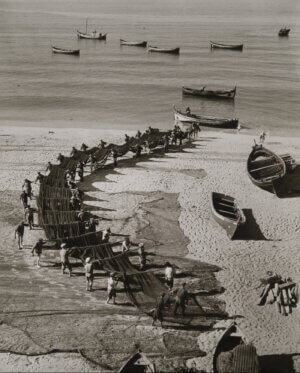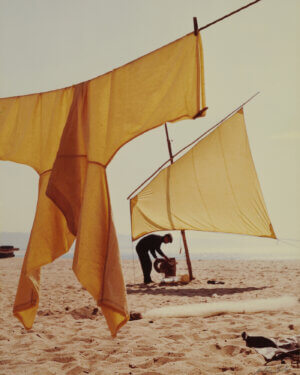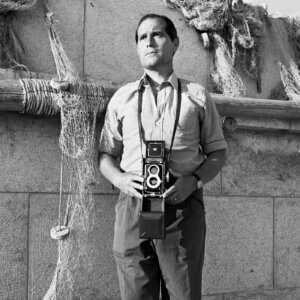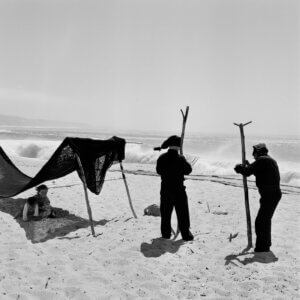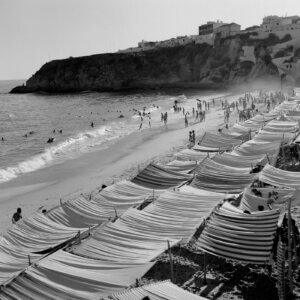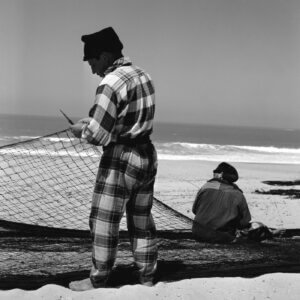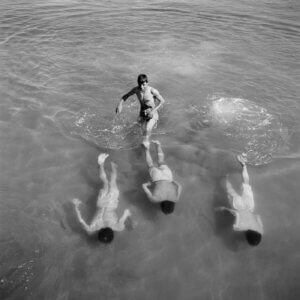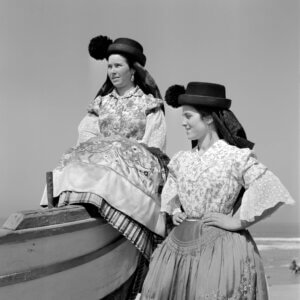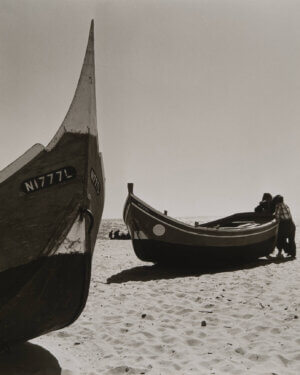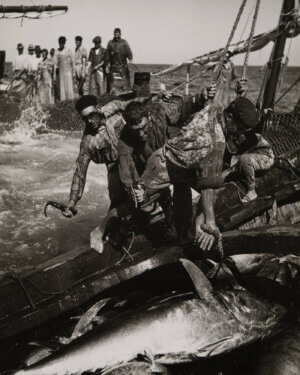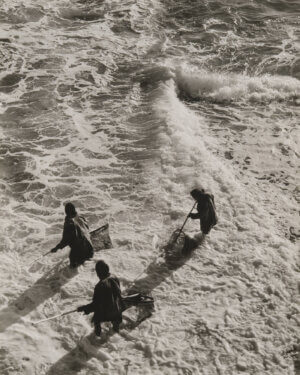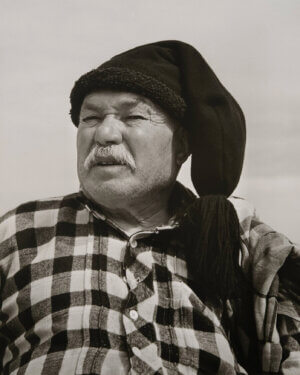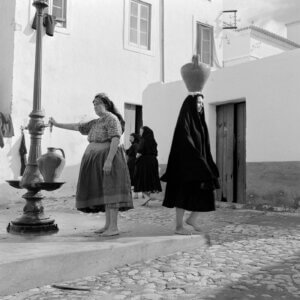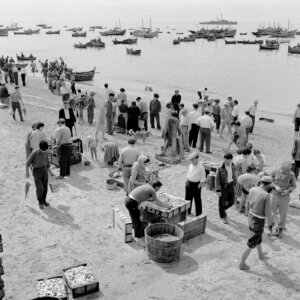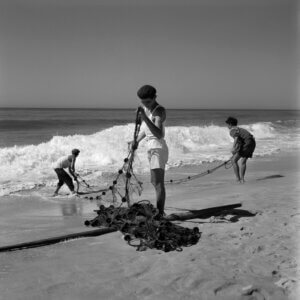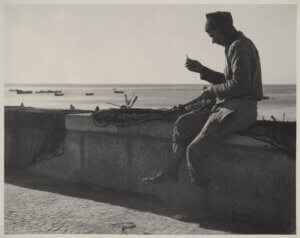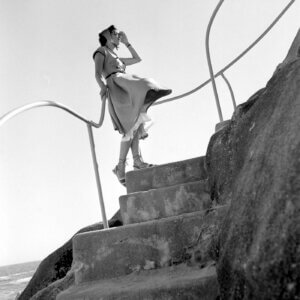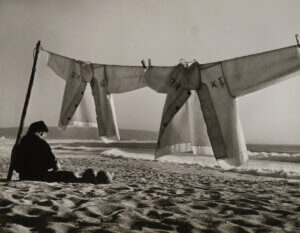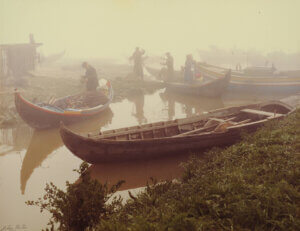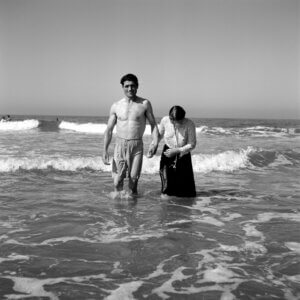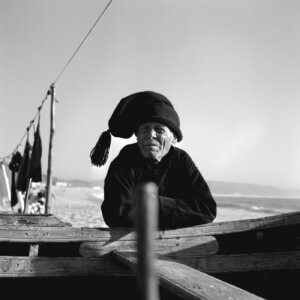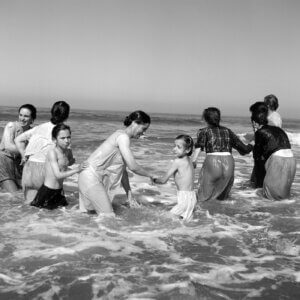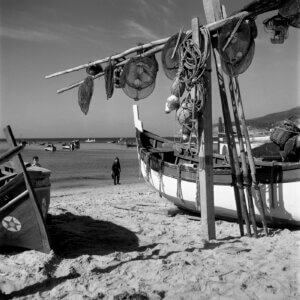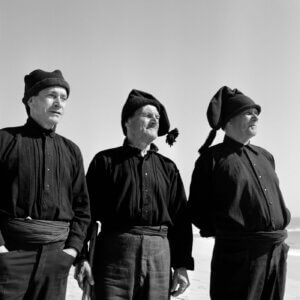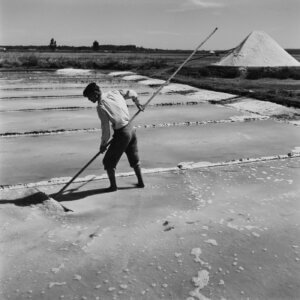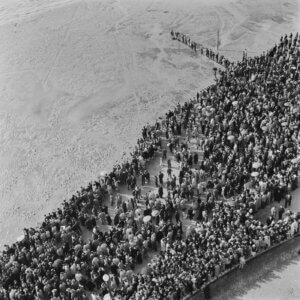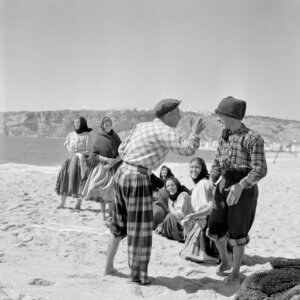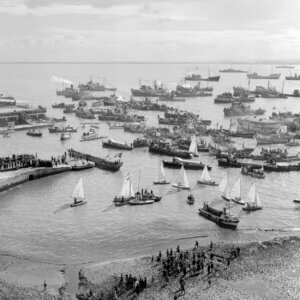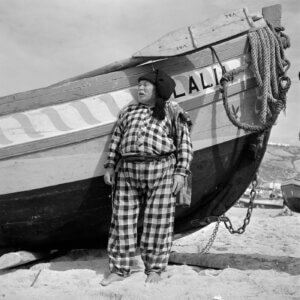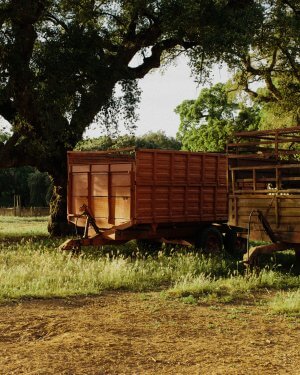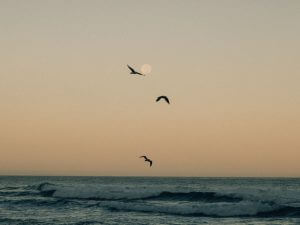“Living canvasses unparalleled in richness, landscapes bathed in light, full of different colors and fascinating contrasts. (….) What is time or physical presence if we only see what we dream, remember what we love and what we’re connected with forever.”
Like his eloquent descriptions suggest, the practice of Portuguese photographer Artur Pastor was a study in contrast: realistic depiction of his environment juxtaposed with a dreamy emotionalism steeped in memory and fantasy. His rich body of work constitutes an unmatched ethnographic catalogue of a Portugal that has since disappeared: women in traditional festive garb, tuna fishermen hauling and washing their nets along the Algarve coast, oxen pulling boats in Nazaré, the distribution of fish on the sand for auction in Sesimbra, seemingly endless fields and sea vistas, representing the vastness of his beloved “fatherland.” Despite the significance of his contributions and his artistry, which is considered equal to photographic masters Henri Cartier-Bresson and André Kertész, Artur Pastor remains relatively unknown—even in his native Portugal.

